Star Trek: Discovery has featured a rotating roster of episodic directors, and among them serves two-time directing partner David Barrett, who first joined the Star Trek franchise during the final run of Star Trek: Enterprise back in 2005.
His first contribution to Discovery came as the fan-favorite Season 1 episode “Magic to Make the Sanest Man Go Mad,” a time-loop tale featuring the return of Harry Mudd (Rainn Wilson) who came aboard ship to terrorize the crew.
Returning for Season 2, Barrett landed one of the pivotal episodes of the first half of the season, the resurrection of Dr. Hugh Culber (Wilson Cruz) by way of the mycelial network in “Saints of Imperfection,” the fifth episode of 2019.
TrekCore caught up with the director a few weeks ago to talk about his not-exactly-smooth start on Enterprise, navigating the mycelial network for Culber’s return, and working aboard the massive Section 31 ship set.
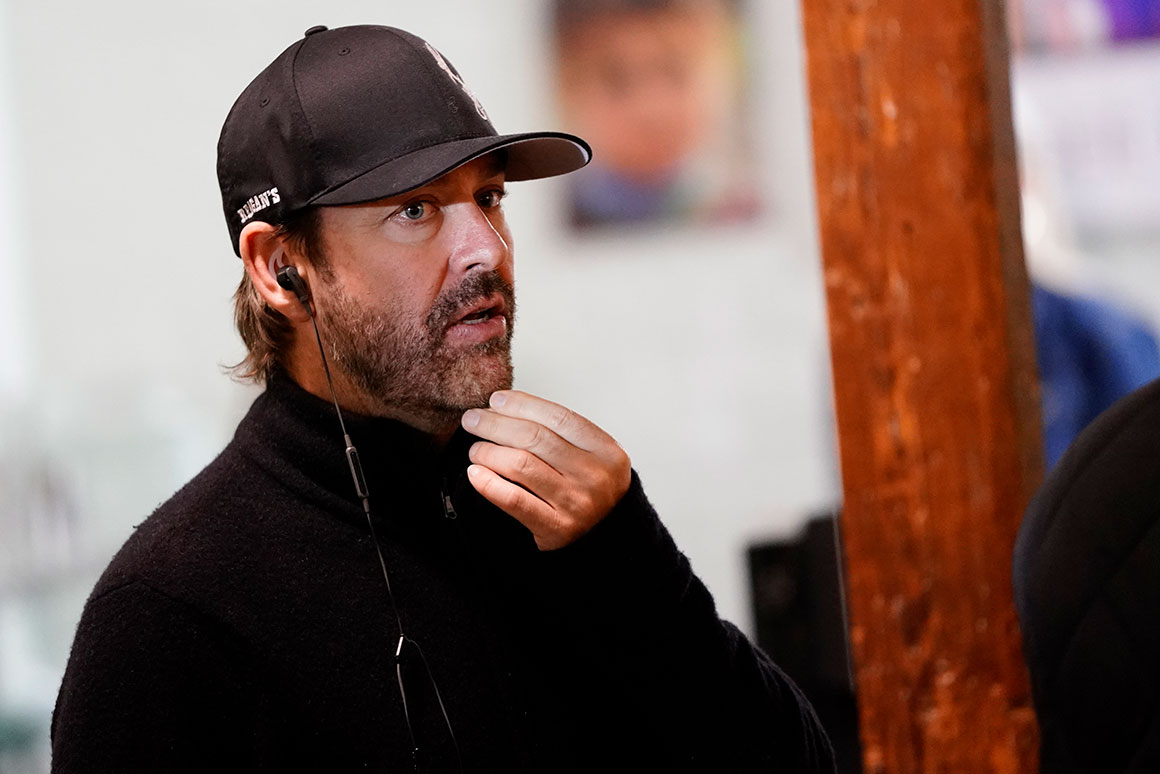
TREKCORE: You’re the first Discovery director, aside from Jonathan Frakes, who got their Trek start on a previous series — before you came aboard to direct “Divergence” for Star Trek: Enterprise, what was your familiarity with Star Trek?
DAVID BARRETT: My dad was actually on the first Star Trek with [William] Shatner as a stunt man actor – he was the jailor in “All Our Yesterdays.” My dad was Burt Reynolds’s and Paul Newman’s stunt double and drove a rocket car. He was the first man that went Mach One on land, and so he had a big career.
But it was funny because I was telling him, “Dad you’ve gotta watch this Star Trek,” and he went, “You know, I was on Star Trek.” So that’s kind of a fun fact!
My grandfather owns a ski area, and there were a lot of things he taught me growing up about entertaining. You’re entertaining an audience on TV, and you’re doing the same on the mountains. You’re manufacturing fun. I think my passion for my career really started at the ski area; getting joy out of imagining a run through the forest and figuring out what people would enjoy.
That simple joy is where I got the joy of moving an audience, and that’s what makes Star Trek so fun. It gives everybody somebody relatable. You can relate to those characters on a deep level, and when an audience can relate you can really move them. But Star Trek: Enterprise was so daunting to be honest. To board a show, and I don’t know if that was the second to last show or almost the last one…
TREKCORE: I think that was very close to the last one. I think they only shot three or four more — after “Divergence” — before they wrapped the show entirely.
BARRETT: It’s funny because at the time it was one of my first episodes that I had gotten as a director. I had a general meeting with the Brannon Braga and Rick Berman. I remember them looking at my resume and Braga said, “You’re a stunt guy?” I said, “I’m not just a stunt guy.” And he said “No, this [resume] looks like you’re just a stunt guy” and I said “I started in stunts. But I’m a second unit director on big movies like Stigmata,” and then I said, “You know something I thought this meeting would go a whole lot different.”
I was really offended, and I started to get up to leave. They ultimately said come back and asked me “Why? Why do you want to direct this show?” and I gave a quote of Gene Roddenberry’s. I said I thought Star Trek was a culture that you had created, just like Gene Roddenberry had talked about.
About Star Trek being an attempt to say that humanity will reach maturity and wisdom and will begin to take a special delight in differences of ideas and difference of life form, and I said, “If we cannot learn to enjoy those small differences and take positive delight in those small differences between our own kinds on this planet then we do not deserve to go out into space and the meet the diversity that is almost certainly there.”
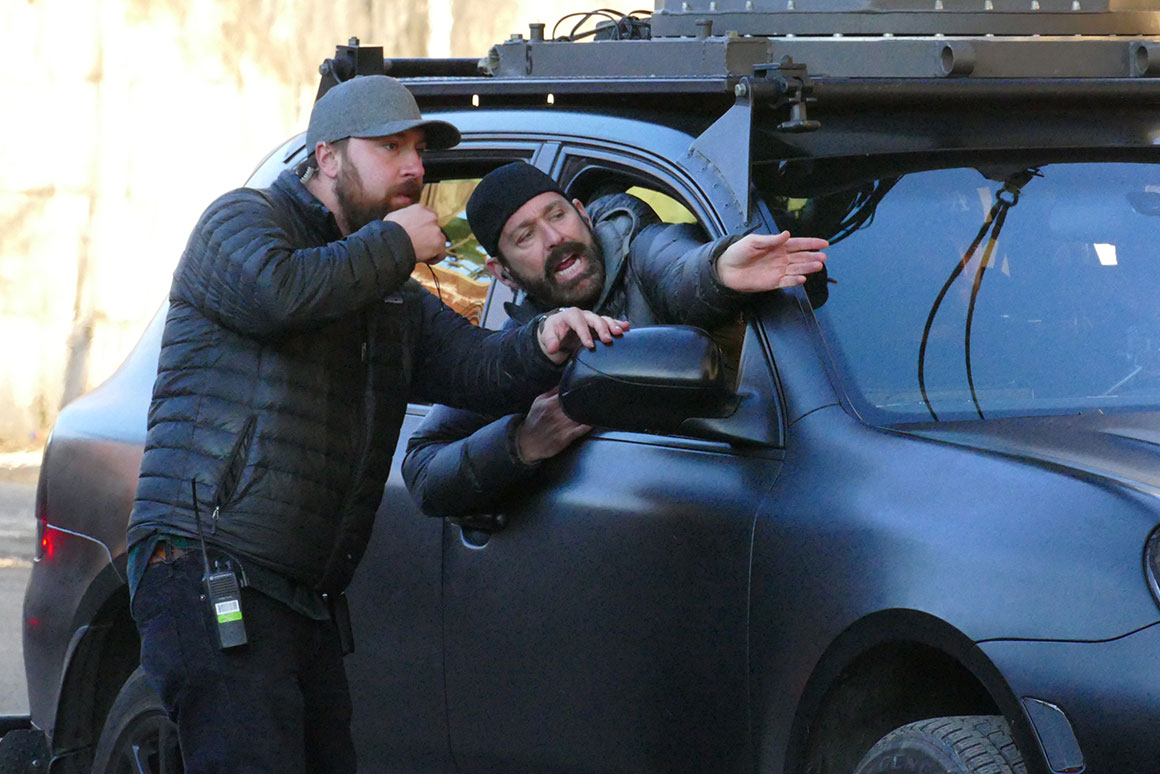
I said, “Just because I haven’t come from writing or film school, I thought I would be accepted for what I could bring to this production. I’m one of the top stunt men in the world; I’ve worked with the biggest directors — Spielberg, the Wachoswkis, Roger Donaldson…” – I just went on down the list.
And I said “I know I can bring heart to every character and I can bring a perspective so that everyone can relate to each of the characters in this episode. I can bring a visual style that is progressive, that still honors what you guys have been doing, and I can bring an energy that you haven’t seen before.”
I was really upset and passionate, and Berman was very kind, and he started talking a little bit more. And then Brannon started talking a little bit more, and ultimately before I got to my car my agent called. I thought for sure he was going to ask me why I would ever walk out of a meeting — and they said you have the job.
I got the job, and I knew it was towards the end [of production of Enterprise] and I asked them if I could really push the envelope in terms of style, and they said yes. Please do it. I talked to the crew and got Marvin [Rush], who had been the director of photography there for 17 years of production, on board with all these new ideas to give [“Divergence”] an energy from the very first shot, which is the camera zooming towards the bridge [of the Columbia NX-02] and goes right inside. You see that shot all the time now, but not 15 years ago on a TV show.
Once I was done with [“Divergence”] they told me if the show was renewed [for a fifth season] they wanted me to return for more episodes. [“Divergence”] was a very different feeling episode; everybody who had seen it at the studio and the producers said that at that time.
But God was I scared! That crew was around for 17 years and I was coming into a situation where I was a fan, but not to the point where I had anywhere near the knowledge of everybody around me.
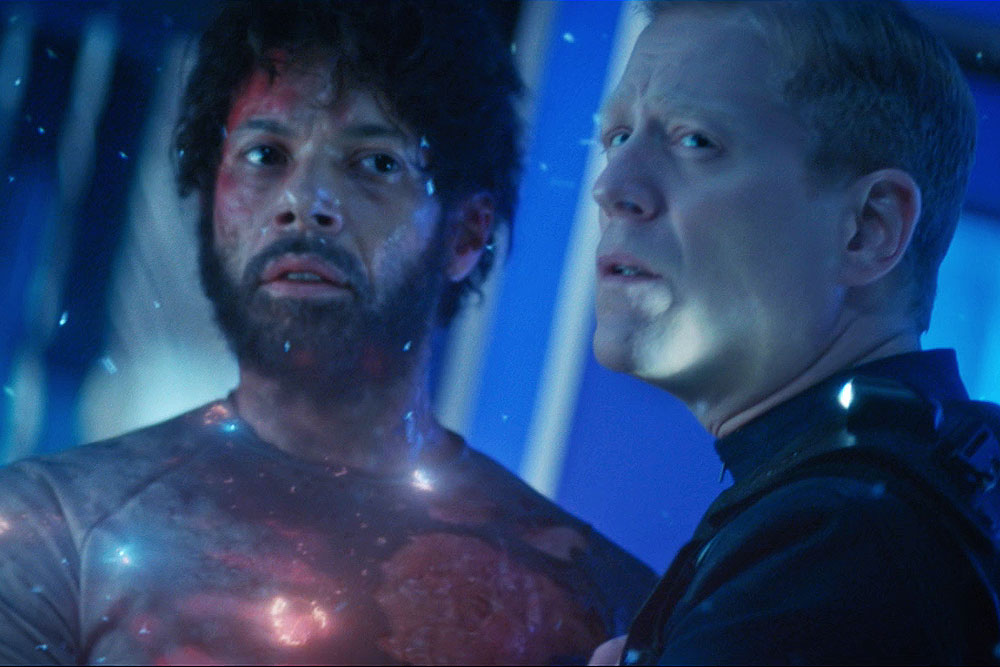
TREKCORE: I could happily talk to you all day about Enterprise, but I’d love to ask you about “Saints of Imperfection.” When you get a copy of the script for an episode like this – a big episode that brings Dr. Culber, who had been killed off at the end of Season 1 – what were you most excited about?
BARRETT: I find the heart in every character. I know my purpose here on Earth is to inspire others. That is why I exist. When I get a script, I look at it through that lens. How can I push, pull, or prod compassion out of the viewer for our heroes and for the villains?
How am I going to try to challenge everybody on a moral and ethical level? How am I going to teach them to have compassion? If there’s a villain, I really want to understand why they are a villain and what was done to him or her when they were young, because you’re not born of evil.
I look for the messages, I look for the themes, and I look for opportunity to move the audience and humanize everyone that is in the episode. This episode had a really big hook – bringing Stamets and Culber, back together again.
After my first read, I just sat in my office with my head in my hands looking at this opportunity and thinking about how I have a really special story here. Given some of the big divides within our country today, how can I take these two characters and use them to help people see compassion and unconditional love? How do I challenge them to love people for who they are?
That’s a driver for every decision that I made in this episode.
TREKCORE: Following on from that; how much freedom do you get as a director of Star Trek: Discovery get to put your own imprint on the product that comes out?
BARRETT: Alex Kurtzman, Heather Kadin and Aaron Baiers told me “shoot your show. Shoot what you want to shoot.” I had a couple of great conversations with Alex Kurtzman where I told him I was very nervous. This is a giant episode! We had a huge amount of characters in every scene.
Previously, when I did Enterprise, you go to do a [scene in which the] ship gets rocked or moved, and the actors know how to do it, the cameramen know how to do it, and it looks how it’s supposed to look. Well [on Discovery] this is an entirely new crew, I have five to eight actors in a scene and I’m having to cue the sparks, I’m having to cue them to move on a certain line, and if they don’t all match up and move the same way, and if the camera doesn’t move at the same time they do, it looks completely hokey.
I had to introduce the movement to the actors, but also these are already some of the most emotional scenes to date in that show with five or six characters in the scene for eight or nine pages of dialogue – including with visual effects and practical effects. That was so tough.
But Alex [Kurtzman] told me to make it look amazing. He said he wanted a fantastic product, and I had seen a rough cut of the first episode of the season, which he directed. That was like a movie! It was daunting to look at, but it helped me figure out what I was supposed to be doing in [“Saints”.] So they just let you go, within reason. There is a lot of freedom there.
There was a lot of conversation about the mycelial network and what that looked like, and what it looked like [in Season 1]. In scenes between Tilly and May, I really wanted to connect and make this about these two women not trusting each other, and making it as tense as I possibly could. At the end of the day, it was about trust and what you would do for somebody that you love. We saw it with Stamets, and I also wanted us to see it with these two women who grow to love each other and trust each other.
I have a fair amount of freedom in terms of how I shoot [the episode]. Prior to shooting, we had a really long tone meeting to talk through the episode and what we wanted out of it, so it was really great to be able to talk about the characters and what he wanted accomplished. It’s just really fun to be able to talk to somebody as fun, and as accomplished, as he is as a writer.
I also had a writer on set, Kirsten Beyer, who was just amazing. She was just fantastic at giving me the rules and the backstory [of Star Trek]. I couldn’t have had a better partner on set. What I didn’t know, she knew and where I had a weakness it was her strength. It was so much fun to talk these scenes out. It was very collaborative.
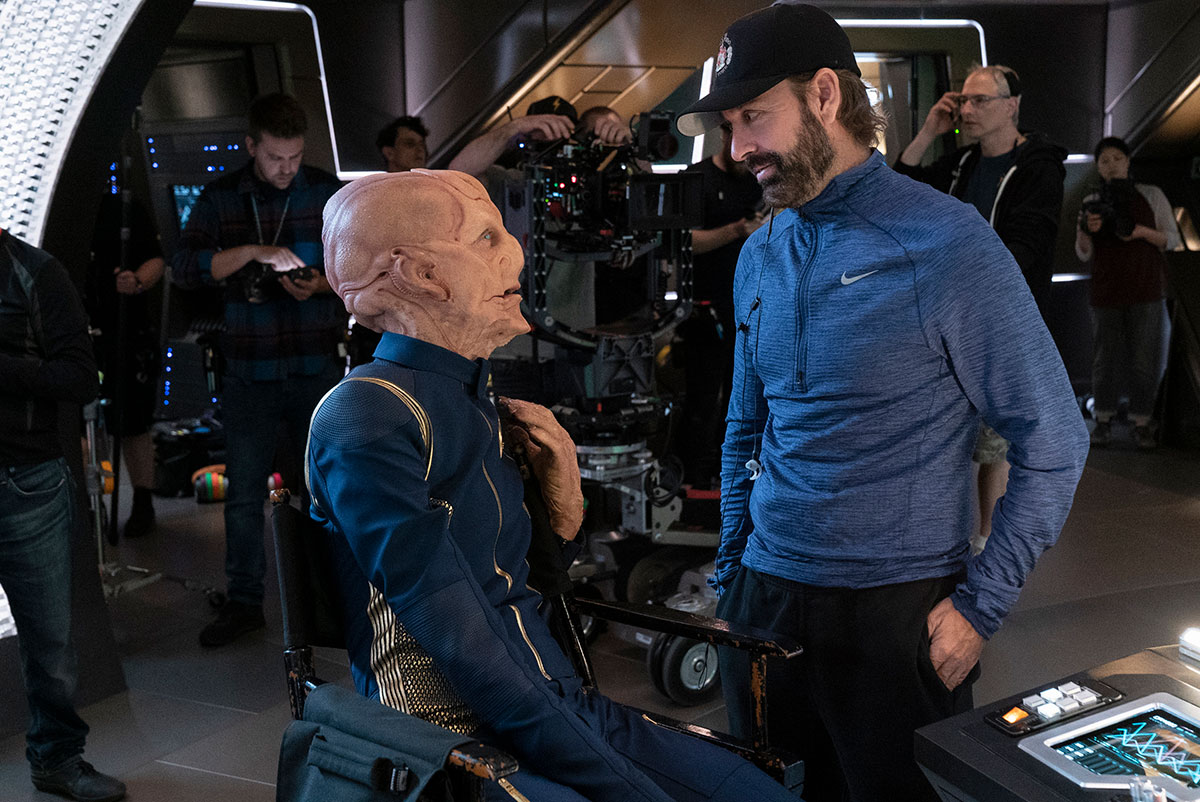
TREKCORE: What’s it like working with the cast, and how do you provide opportunities for each of these different actors to get their own moments to tell their side of the story?
BARRETT: It’s in that first read of the script. You’re reading and trying to find – where is the heart in each of these characters?
Burnham is the lead on the show, but it’s a big ensemble. You have Anthony Rapp, who I cannot even tell you what an amazing actor he is – that guy is amazing. He’s amazing because he gives so much all of the time, both on and off screen. He’s always there [on set], which is important because when you have five or six people in a scene with everybody having to do these physical effects, if one person is off you have to do it again. The actors all were so helpful to each other, and we had some long hours. It was really special to work with a cast who really love each other as much as this cast does.
In the first scene with Burnham [running from the bridge to engineering] I wanted to tell a story because it had to frame the whole episode. I wanted that first image of her [in a panic because of Tilly’s disappearance] to guide the viewer and let the viewer know what kind of episode this was going to be. But how do I get a shot of Burnham running inside the ship? I needed it to be desperate; I needed her to run full out. Sonequa can outrun any one of us on this crew, so how am I going to get that desperate look and see her face shake and see that desperation for her friend?
Ultimately, I got an electric bike, we put a camera on it, and we whizzed it all around the Discovery set. She’s running as fast as she can moving through people, and that really was her moment. Then she runs into [engineering] where she sees Anthony shaking his head, and you see her breathing very hard and you see the emotion in her… ”I’ve lost her. I’ve lost her.” I try to find those moments in each character that I can capture in the most truthful and vulnerable way.
And then we had Anson Mount. I did a pilot with him called “The Mountain,” so I’ve known him for years, but I haven’t worked with him since. I said “Anson, what makes you a great captain? I want to know. I want to know what makes you special and what makes Pike special.” We decided that if there’s one thing that Pike does well it’s that no matter how many people are in a room, he can make them feel like you are talking and listening only to them.
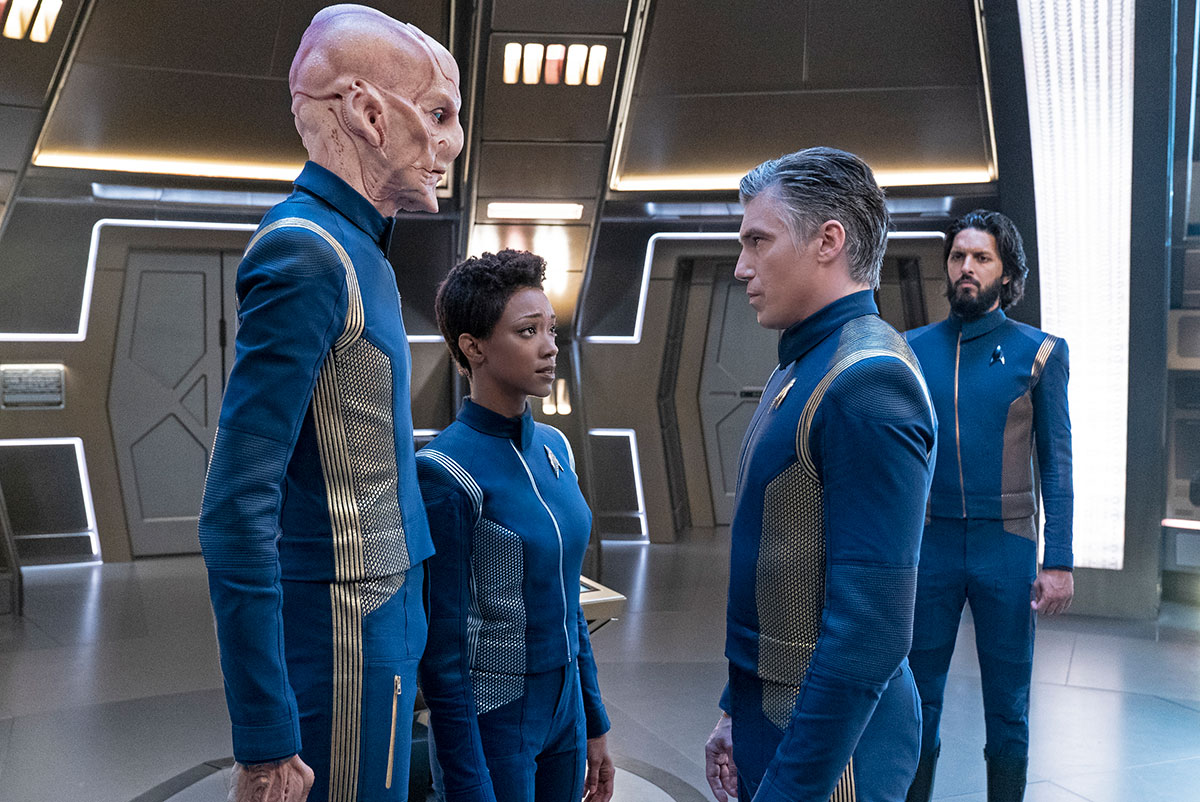
So, when we started to block out his bridge scenes, we decided we wanted him to go to each officer for an answer. I didn’t want him to just sit in his chair; I wanted him to reach out to them. Ultimately, we decided to block it that way so that we could show the audience through his behavior why he is captain of the ship. I talked to Aaron [Baiers] and we went on a weekend with [first AD Woody Sidarous] and Kirsten Beyer and we pretended we were the actors. Kirsten rewrote and shifted dialogue around so that we could get that first scene of him on the bridge walking all over the place.
That really was a moment for me where I could show his compassion for his fellow workmates. And if you look back at it, I think we as an audience watching that really got a sense of who he was and his personality. That’s just one example of how I bring out the humanity, the heart, the love in each character, which translates into something that’s very alive.
And then for Stamets and Culber, we knew what the big moments on the page were. But for Wilson [Cruz] I wanted to show through his wardrobe what it meant to be in the mycelial network and wanted to use his wardrobe to help tell that story. He had to appear to be a monster, but we still had to know who he was when we saw him within the ship. So, I decided when we started talking about the wardrobe that I wanted to have the wear and tear tell a story.
If you notice watching the episode, the parts of his body that are exposed and ripped are right over his heart. I said I imagine Culber on these long days alone on a journey by himself, holding his heart and laying on his left side. So, let’s put holes on the points of contact on his right hip. I didn’t want to make him have ripped clothes just to show off his gorgeous body and just to be gratuitous. I really tried to ground the way we found him and the way that his wardrobe was used in a way that was heartfelt.
So that drove every decision in terms of where we put a hole on his hip, on his elbow, and I just imagined him holding onto his heart and just keep tugging at his wardrobe while he’s laying on his left side.
Those are the little things, and when you talk an actor through the movements or the costumes you can see them be moved by the thought that you put into that character. It’s just fertilizer to what these guys have already brought with them to [their performance].
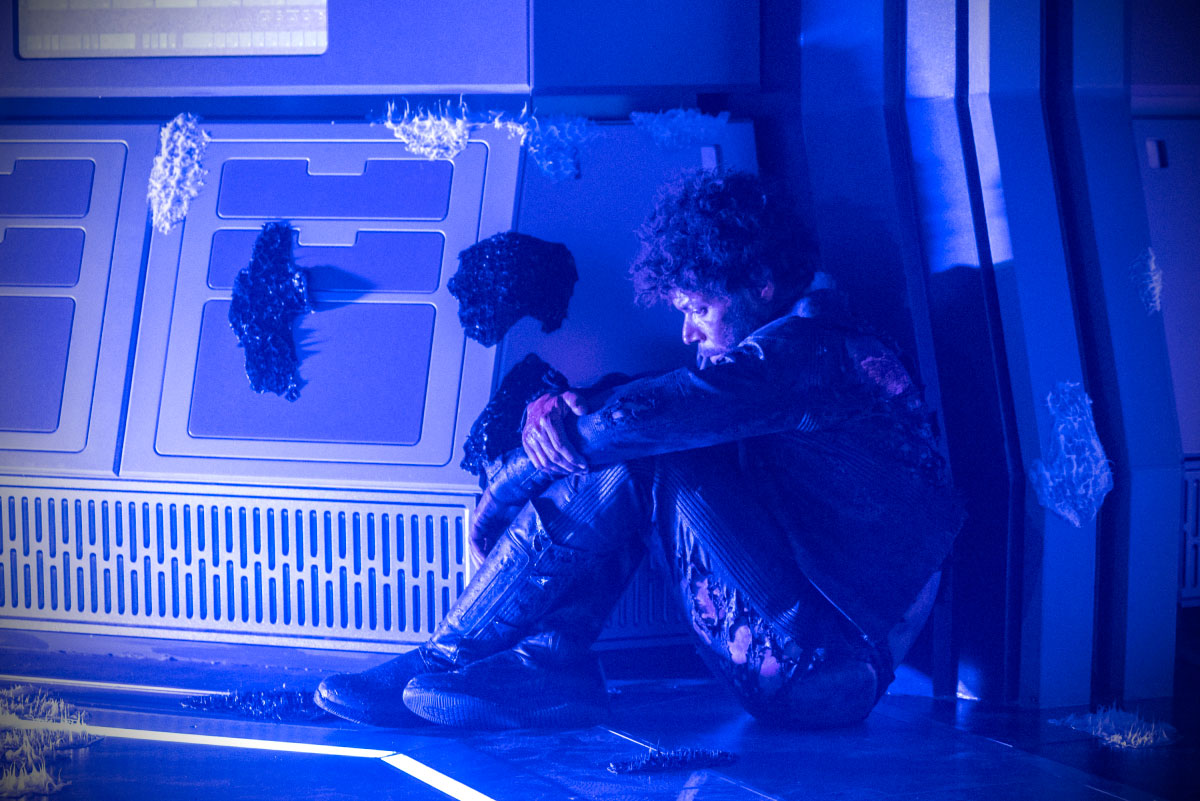
TREKCORE: It definitely felt like you definitely saw Culber’s sense of isolation and loneliness and being constantly attacked — but then on the other hand, with May and the Jah’Sepp, you kind of felt like both characters had a really strong and defensible point of view.
BARRETT: Yes, yes. When we revealed Culber and [Tilly and May] started fighting, I really made the actresses get physical with each other to make it feel desperate. I pushed them to that point, because I thought in the mycelial network it was really important to play that distrust. These two characters do not trust each other, and I wanted to see this really beautiful journey where they learn to come together.
That was very fun because Tilly is almost the comic relief of the show, and I really wanted to see what she’s capable of. I said to Mary, “One day your character is going to be a captain, isn’t she? You need to show me that you she is a very good judge of character and that she can fight for what she believes in.” And that’s what we saw from Tilly in this episode. I thought that was really refreshing and gave us insight into the depth of her character.
TREKCORE: One connection to “Divergence” is Section 31, the shadowy intelligence unit of the Federation. How do you work with the actors and how do you shoot something that has evil characters in it without having them come off as mustache twirling caricatures?
BARRETT: I’ll point to the last scene [in “Saints”] with Burnham and Georgiou. It was really important for me in that last scene that it’s about trust. I said to Michelle [Yeoh] at one point – listen to [Burnham] and the fact that she does not trust her own mother. It’s about boiling it down to simplistic terms of trust and love that humanizes the [Section 31] characters and makes it become real. If it’s real, then it’s relatable.
In order for the show to feel real there has to be heart. And I just find those moments to really anchor it. And I said to Michelle, “Michelle, [Burnham’s] not listening to you she doesn’t trust you. Let it hurt you.” And I think you see shades of Michelle’s character in there that you hadn’t seen before. Do you agree?
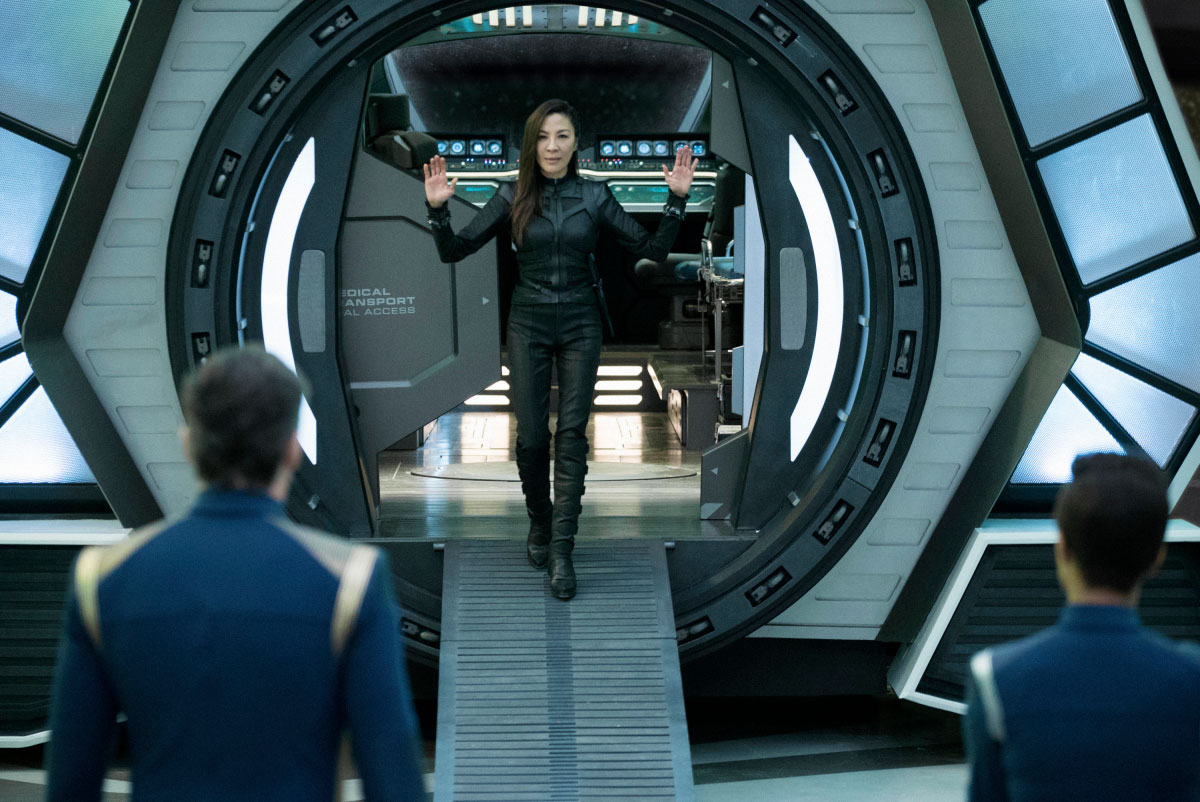
TREKCORE: I think she’s such a layered character. The Mirror Universe has always been portrayed as being more caricatured, but it seems like the Discovery portrayal and the character arc Georgiou is on is one of trying to add much more depth.
BARRETT: Yeah. And [Georgiou] has a line “You’re going to have to start trusting me, and have a little faith, Michael.” And that’s what she’s fueled by, right? That was a real challenge, and it was heartfelt. I tried to just make it real between these two almost mother-daughter figures in Burnham and Georgiou.
She also has a really good scene when she’s walking with Burnham and they almost begin to fight. Georgiou is eating an apple, and she drops it to assume a fighting stance. I had to shoot that apple a bunch of times – because it just meant so much in terms of a shift in their relationship. That physical act was a moment when these women were about to go toe to toe. It got real in that moment, and that moment of the apple dropping was a shift in their relationship and definitely a shift in the scene.
TREKCORE: You were the first director to shoot extensively on the Section 31 control center set. What’s it like to shoot on a multi-level set like that and how do you use that to help tell the story?
BARRETT: In that final scene I had to have [Pike and Leland] meet, and this is a relationship that’s going to travel a few episodes, so I want them to know who’s boss. I put [Cornwell] on the upper level, and I put Pike at the bottom, which gives the audience a chance to get his point of view.
So, it’s between those two, and I have to – in a believable way – have Cornwell enter off camera. And I decided I would love to see how different [Pike and Leland] are, so Cornwell starts to move, and they have to follow her because she is running the show. And so, you see the two characters go up two separate ladders to the upper level. That was to give the audience an idea of how really different these guys are, and how they cannot stand each other.
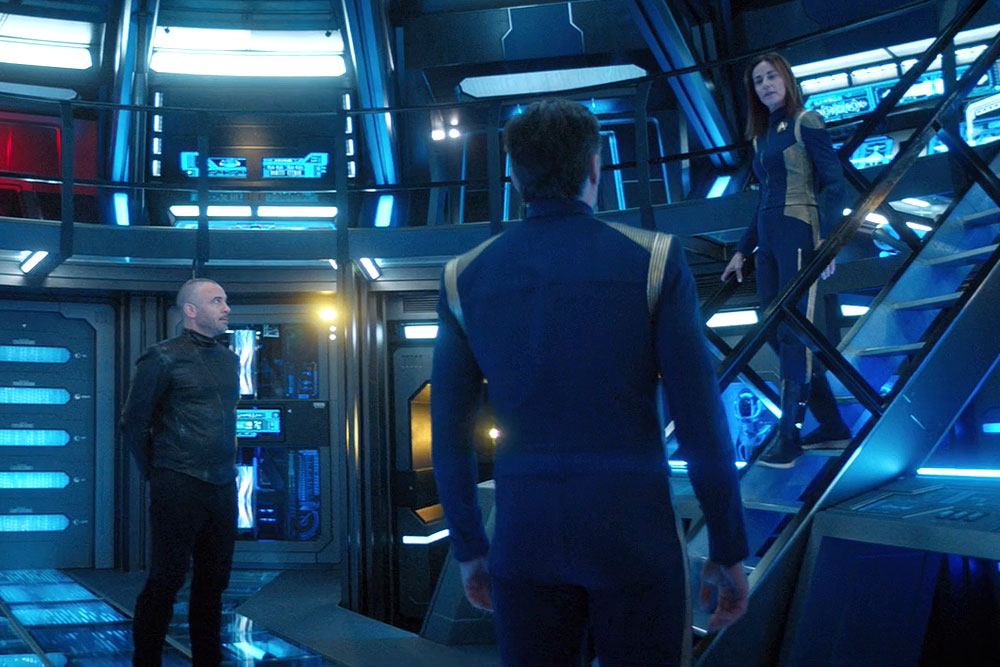
I thought it was a good way, without sound or dialogue, to know exactly what the dynamic was between these three characters. That is something that I really pay a lot of attention to. Paul Newman was my godfather, so growing up a lot we would talk about scripts and I told him I wanted to be a director one day.
He would just talk about blocking and tell me to block the scene in such a way that, without dialogue, you would know what was going on only through looks and the characters’ behavior. He said that if you cannot know what the scene is by the way it is blocked then you have not done your job as a director.
![]()
Our Star Trek: Discovery Season 2 wrap-up coverage will continue next week!
